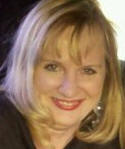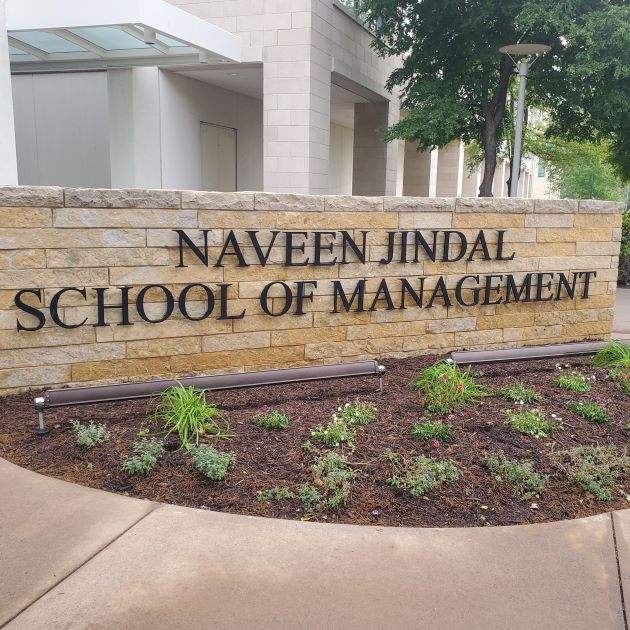
This spring, graduate students enrolled in The Entrepreneurial Experience (ENTP 6398/SYSM 6315), got a unique opportunity to offer AT&T their best suggestions on how to expand the company’s “internet of things” offerings in the healthcare space. The internet of things, often branded IoT, allows physical devices like sensors, appliances, traffic signals and vehicles to exchange data via hardware, software, sensors and actuators embedded in each item. In healthcare, potential IoT devices might be heart-rate and blood-pressure monitors that could connect with smartphones, which would then send abnormal readings to on-call nurses or physicians.
Working on a high-level business plan, the 14 students in the entrepreneurship class made proposals on how best to use the internet of things as it relates to patient data on two fronts. The students looked at collecting, moving, storing and analyzing data securely and efficiently in the healthcare system. They also researched proactively and pre-emptively acting on that data to provide timely intervention to avoid more severe and more costly patient conditions.
Taught by Naveen Jindal School of Management faculty member Dr. Rajiv Shah, who worked in partnership with AT&T, the class was patterned after a similar one in the fall of 2016 that offered students a chance to engage with the internet of things, as it applies to Smart Cities. That experience was so rewarding for everyone involved that Shah and leadership from AT&T decided to collaborate again.

Mobeen Khan, assistant vice president, IoT Strategy and Product Management at AT&T, said that this spring the students, drawn both from the Jindal School and the Erik Jonsson School of Engineering and Computer Science, brought innovative ideas to the table. “It was a great experience working with them,” Khan said. “I am hoping some of these ideas get implemented in the market as these students go on to become leaders in different organizations.”
After interacting with AT&T representatives throughout the semester, the students presented their final findings to AT&T executives on the final day of class.
Before the semester began, the team from AT&T had presented Shah with various healthcare ecosystems related to the tricky proposition of sharing private and secure patient information across the continuum of care, including physicians, hospitals, pharmacies and insurance companies. Knowing the high stakes involved, Shah recruited JSOM faculty to advise his research teams. Dr. Forney Fleming and Dr. John F. McCracken from the Center for Healthcare Leadership and Management and Dr. Indranil Bardhan and Kirk Kirksey from the Information Systems Area all agreed to pitch in.
The students divided into three teams to research three healthcare ecosystems. One team worked on patient-centered acute care coordination and interoperability, which increases the chances that all healthcare providers will be on the same page regarding a patient’s vital signs, medications diagnosis, treatment, lab tests, insurance, administrative and demographic data. Another team chose medication reconciliation across hand-offs and transitions of care, meaning fewer errors, less abuse and less risk to both providers and patients in prescribing, dispensing and taking medications. The third team tackled continuity of patient monitoring and care across transitions of care, which better helps caregivers seamlessly transition the care of a patient to such downstream health providers as nursing homes, long-term care facilities, home-healthcare providers and hospices.
The students had the opportunity to visit the AT&T Healthcare Foundry in Houston — a research and development center that develops innovative digital platforms to improve human health.
The teams presented business plans for AT&T to provide Accountable Care Organizations — ACOs — and hospital systems end-to-end solutions. One team had a plan that would provide diabetes patients a smartphone-enabled “smart” glucometer. The smart glucometer securely transmits data to all the providers on the patient’s team so that they can help insure normal insulin levels and avoid acute episodes, which would require emergency care.
A second team put forward a plan that would provide Medicare patients with smart medication bottles and dispensers with embedded IoT solutions that would alert patients and responsible caregivers to missed doses.
And a third team discovered a potential market for AT&T to enable ACOs to provide an end-to-end solution for early breast-cancer detection through the use of the “iTBra,” a device that measures how heat is generated in breast tissue. It leverages machine learning to identify the likelihood of breast cancer and whether the patient should follow up with a primary care provider for further screenings. The data analysis is done immediately on the cloud, providing the patient with instant results rather than having to send the information to a lab for analysis.
A member of that third team, Mark Kukiz, an MBA and MS in Innovation and Entrepreneurship student, appreciated the real-world aspects of the project, which, he said, differed significantly from traditional classroom projects.
“Through our ongoing meetings with AT&T and ongoing refinements and iterations, what we ended up with was completely different from what we’d started with,” he said. “Compare that with traditional schoolwork, in which we typically have a well-defined project upfront and we execute it. A project like this one is much more realistic. We can’t just, after one meeting, decide what our solution is going to be.”
As a digital product manager at Capital One, Kukiz had experience in these types of projects. He used the project as an opportunity to leverage his experience and talents in a different domain and provide mentorship to less-experienced teammates. He told fellow teammates that frequent feedback and interactions with the stakeholders would be critical to the team’s success.
Kukiz also said that the project gave students a taste of what managing people is like and — since the uncertainty of the final outcome often created tense moments — opportunities to use their conflict-resolution skills.
Classmate Mallory Bing, enrolled in the traditional master’s in system engineering and management (SEM) program that is delivered through an equal partnership between the Jindal and Jonsson Schools, brought an engineer’s perspective to the project. She graduated from the Jonsson School in 2016 with a bachelor’s degree in mechanical engineering.
“I imagine that in a company, they would just tell me, as an engineer, what to do, and I go build it or tweak it; and it’s done,” said Bing, whose team came up with the “smart” glucometer plan. “Now, I get to see what is motivating the decisions that are made at a higher level that influence the engineering decisions. It’s really neat to see and have that perspective. It’s been a really valuable experience.”

The team members from AT&T who worked on the project were unanimous in declaring the project a success. Zachary Bujnoch, a senior product marketing manager, enjoyed sharing his experience with the students and commented on the quality of work they produced.
“It was a pleasure watching the teams grow to produce final reports on par with what is expected in the industry,” he said.
Basavaraj (Raj) Patil, lead technical architect in the IoT Solutions division, saw the benefit to AT&T from this partnership as gaining the possibility of expanding into new markets based on sound research put forward by the graduate students.
“This collaboration with the Jindal School has been phenomenal,” he said. “I saw a wide variety of student experience in this class. They come from different backgrounds, including industry and computer science — and the fact that we’ve got the healthcare program collaborating with us has really brought a lot of value as well.”

Donna Steele, product marketing manager for AT&T IoT Healthcare, saw the course as an effective method to teach students to form product strategies.
“The applicability of research into markets, technology, design, and revenue realization and presenting was evaluated as they would be in a corporate setting,” she said. “[It was a] great opportunity for me to provide background and guidance through their process and challenges.”
Although AT&T is not obligated to implement any of the solutions the student teams offered, Shah said, each business plan they provided nonetheless equips the company with valuable business intelligence, such as what companies to pursue for partnerships, what challenges may be found in the market, what some solutions are, and how big a market might be. The real-world experience the class provided is invaluable in equipping them for business success, Shah said.
“What I tell the students is that they can apply the research they do in putting these projects together toward starting their own businesses or doing something similar within large companies,” he said. “The skills are transferable. We like the context of a partnership with a large company like AT&T because the students benefit from their expertise and perspective, and the company benefits from interacting with our students and faculty.”





